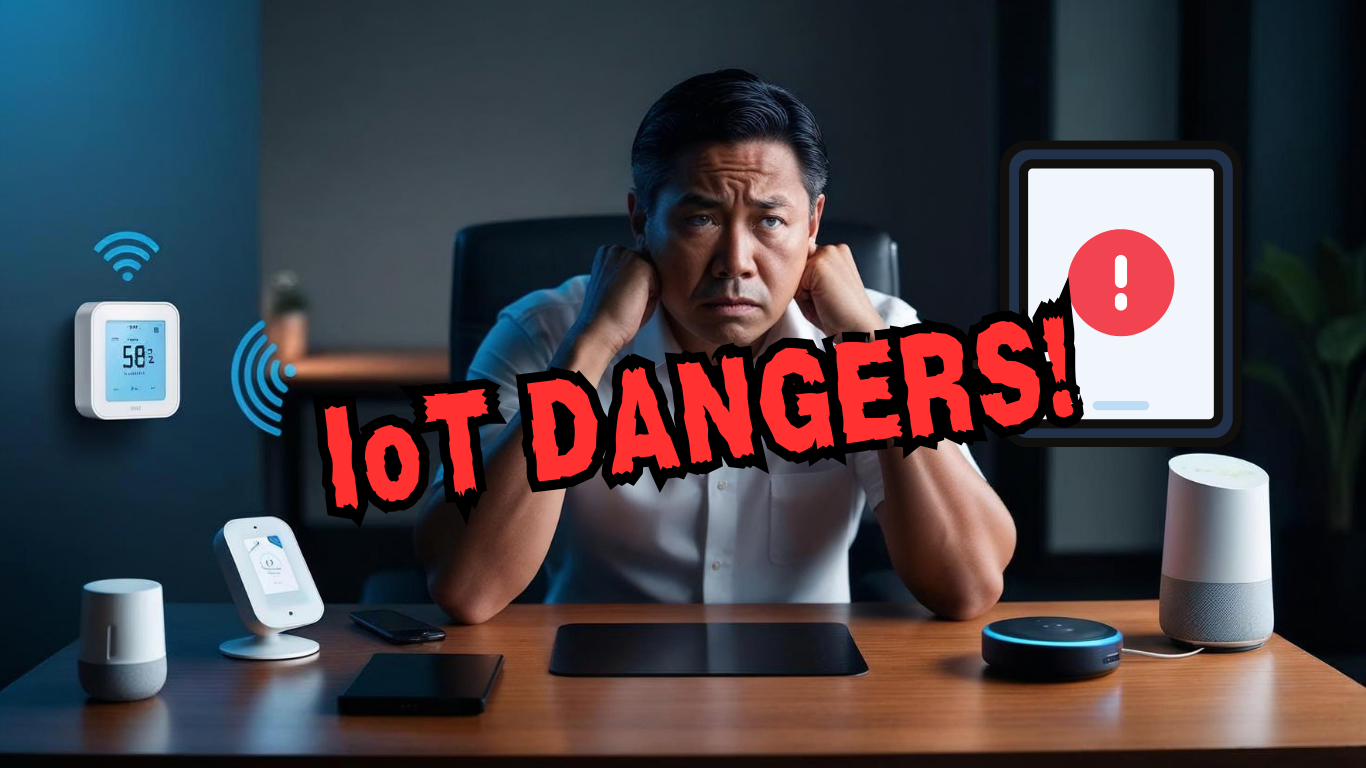
From smart thermostats to security cameras and even refrigerators, more devices are demanding internet access than ever before. But here’s the truth: just because something can connect doesn’t mean it should—especially on your business network.
In this episode of Stimulus Tech Talk, CEO Nathan Whittacre breaks down the risks and realities of Internet of Things (IoT) devices in small and medium-sized businesses. If your office is full of “smart” tech, this guide will help you understand how to manage it safely.
The Hidden Problems with IoT Devices
Many business owners bring in IoT devices for convenience or efficiency—but end up introducing new problems in the process.
Two major concerns stand out:
-
Cybersecurity Risks: Many smart devices are shipped with default usernames and weak security. Some even contain backdoor vulnerabilities, especially off-brand imports.
-
Bandwidth Overload: A single device may not slow down your internet—but dozens of them downloading firmware updates or streaming can cause major slowdowns, especially in offices with limited bandwidth.
What Is Shadow IoT?
Shadow IoT refers to unknown or unauthorized devices on your network. These can include employee smartwatches, personal speakers, or visitor gadgets that connect without approval.
The danger? These devices are usually unmanaged—and completely invisible to your IT team unless you have monitoring in place. They can serve as an open door to your internal systems.
How to Protect Your Business Network
One of the smartest moves you can make is network segmentation—that means setting up separate Wi-Fi networks for different types of traffic. Nathan recommends organizing access like this:
-
A secure network for business-critical systems (like POS, patient data, or financial apps)
-
A separate network for office IoT devices (like security cameras or thermostats)
-
An isolated guest network for visitors and employee personal devices
By keeping these environments separate, you reduce your risk of a device acting as a bridge between a hacker and your most sensitive data.
A Real-World Example: The Casino Hack
In one high-profile breach, a casino’s smart aquarium thermostat was hacked—and used to gain access to the network. The thermostat wasn’t properly segmented, allowing attackers to pivot into critical systems.
This kind of story isn’t rare anymore. It’s a clear warning: even small, overlooked devices can cause major damage.
Buying Smart (and Secure) IoT Devices
If you’re shopping for connected tech, keep these best practices in mind:
-
Choose well-known, reputable brands with U.S.-based support and security updates
-
Avoid unknown imports or devices with limited documentation
-
Always change default passwords before deployment
-
Never connect IoT devices directly to a public-facing IP
-
Use an AI tool (like ChatGPT) to summarize privacy policies quickly and see where your data is going
When IoT Works: Business Use Cases That Make Sense
IoT can be a competitive advantage when deployed correctly. Here are some powerful ways businesses are using smart tech:
-
Environmental monitoring in healthcare or manufacturing
-
Predictive maintenance for machines and equipment
-
Smart inventory tracking and logistics
-
Field sensors and wearables in construction or agriculture
Paired with AI, these devices can generate insights that improve productivity, safety, and operational decision-making.
Final Thought from Nathan
“Don’t connect a device just because you can. Ask if it actually helps your business. If it doesn’t, unplug it.”
The takeaway? Be intentional. Every new device should serve a clear purpose—and be secured as part of your IT strategy.
Want the Full Conversation?
This article just scratches the surface.
🎧 Listen to the full episode on your favorite platform:
In just under 30 minutes, you’ll get real-world stories, expert advice, and practical tips to protect your business from smart tech gone wrong.







